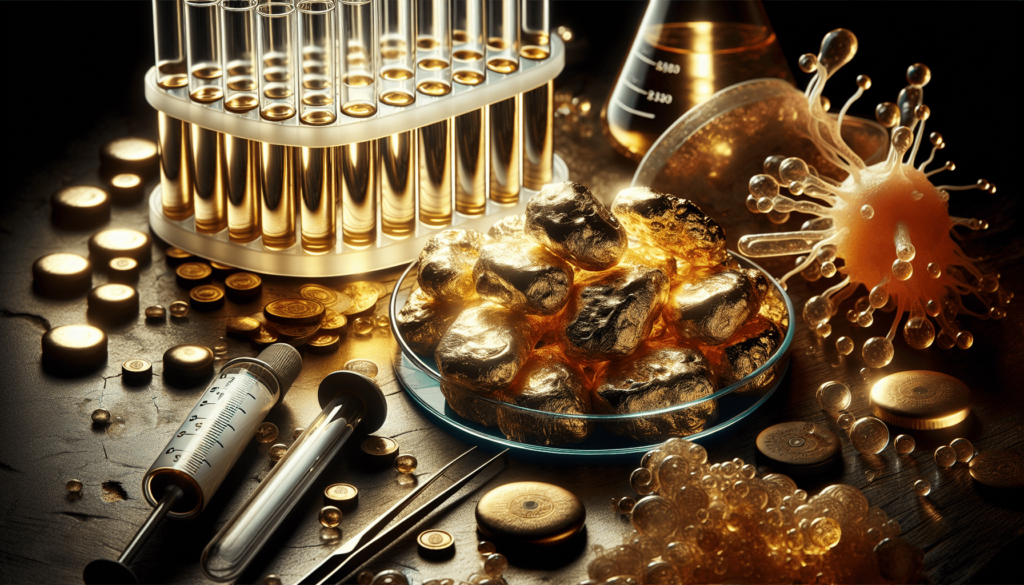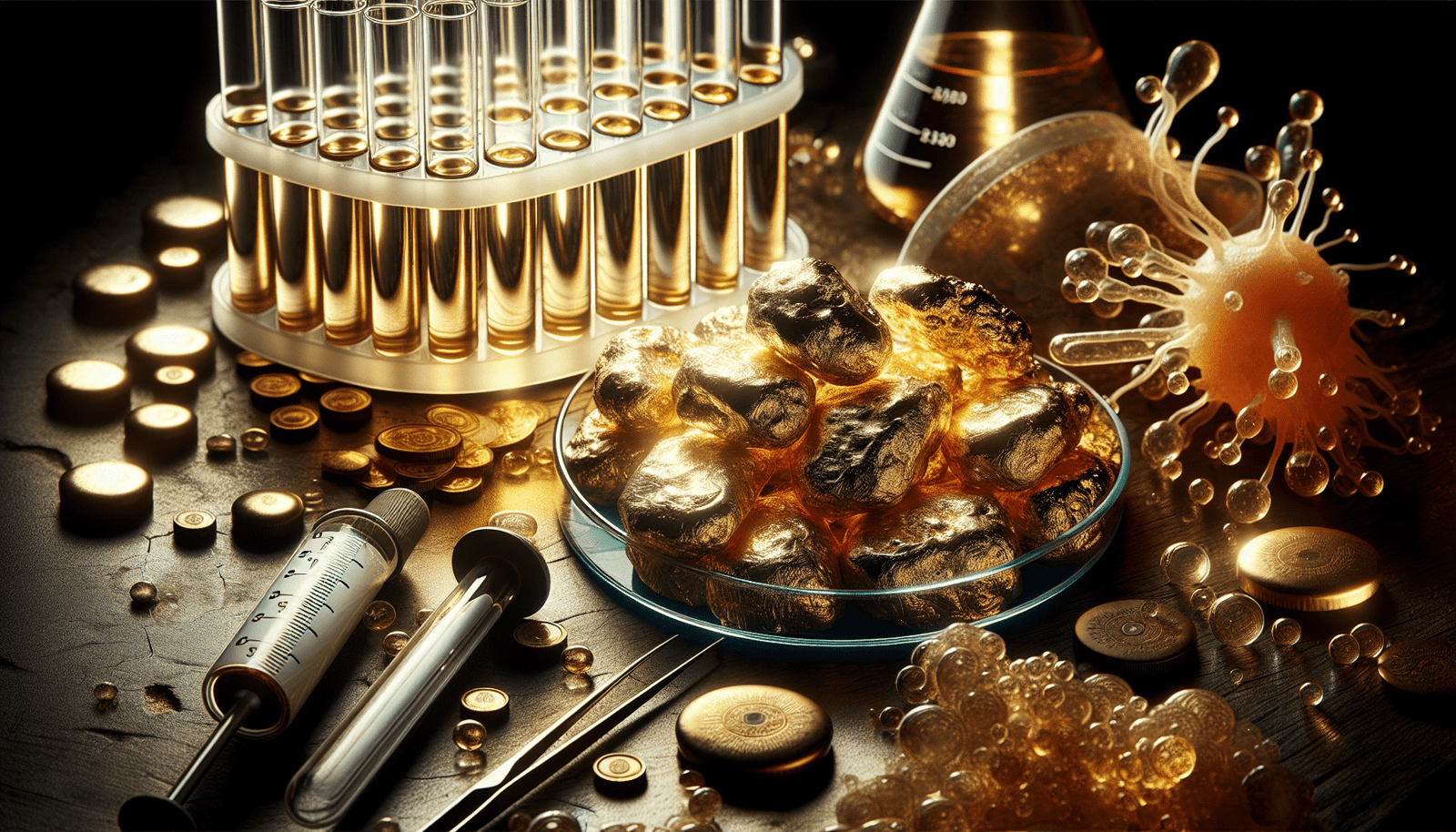Gold extraction has long been a complex and costly process, but thanks to recent advancements in biotechnology, a new era of efficiency and sustainability has emerged. In this article, you will discover how biotechnology is reshaping the gold mining industry, paving the way for more eco-friendly and cost-effective extraction methods. Through the use of microorganisms and enzymes, scientists have developed innovative techniques that not only reduce the environmental impact of gold mining but also increase the yields of gold production. Prepare to explore the fascinating world where science and precious metals intertwine!

Introduction
Gold extraction has historically relied on traditional methods such as chemical processes and mechanical techniques. However, biotechnology is emerging as a powerful and sustainable alternative in the gold extraction industry. Through the utilization of microorganisms and genetic modification, biotechnology offers numerous advantages, including increased efficiency, reduced environmental impact, and lower costs. In this article, we will explore the fascinating world of biotechnology in gold extraction and delve into the various processes and techniques involved.
Biotechnology in Gold Extraction
Definition of biotechnology in gold extraction
Biotechnology in gold extraction refers to the use of biological processes, specifically microorganisms, to extract gold from ores and other sources. This approach harnesses the unique capabilities of living organisms to selectively recover gold particles and separate them from other minerals. By utilizing the metabolic activities of microorganisms, biotechnology offers a sustainable and environmentally friendly approach to gold extraction.
Advantages of using biotechnology in gold extraction
There are several advantages to using biotechnology in gold extraction. Firstly, it is a more environmentally friendly alternative compared to traditional methods. The use of microorganisms reduces the need for harmful chemicals and minimizes the release of toxic by-products into the environment. Additionally, biotechnology offers higher selectivity, allowing for the efficient extraction of gold while minimizing the extraction of unwanted minerals. Lastly, the use of biotechnology can lead to cost savings, as it has the potential to be more energy-efficient and require fewer processing steps.
Microorganisms Used in Gold Extraction
Types of microorganisms used
Various microorganisms are utilized in the process of gold extraction. One commonly used group is bacteria, such as Acidithiobacillus ferrooxidans and Acidithiobacillus thiooxidans. These bacteria have the ability to oxidize sulfide minerals present in gold ores, releasing gold particles for further recovery. Another group of microorganisms commonly employed are cyanobacteria, such as Synechococcus elongatus and Gloeocapsa sp. These cyanobacteria can accumulate gold particles within their biomass, making them attractive for extraction processes.
Role of microorganisms in gold extraction
Microorganisms play a crucial role in gold extraction. They have the ability to oxidize minerals and solubilize gold from ores, a process known as bioleaching. Microorganisms produce enzymes that can break down complex mineral structures, making it easier for gold particles to be released. Additionally, certain microorganisms have the capacity to accumulate gold within their cellular biomass through a process known as bioaccumulation. The accumulated gold can then be extracted for further processing.

Bioleaching Process
Explanation of bioleaching process
Bioleaching is a key process in biotechnology for gold extraction. It involves the use of microorganisms to oxidize sulfide minerals in gold ores, releasing gold particles from the mineral matrix. The bioleaching process occurs in a controlled environment, typically large vats or tanks, where the ores are mixed with a solution containing the microorganisms. The microorganisms then oxidize the sulfide minerals, releasing gold ions into the solution.
Steps involved in bioleaching process
The bioleaching process typically involves several steps. Firstly, the gold ore is prepared by crushing and grinding it to expose the gold particles for microbial activity. The crushed ore is then mixed with a leaching solution containing the selected microorganisms. This mixture is then agitated to ensure effective contact between the microorganisms and the ore. Over time, the microorganisms oxidize the sulfide minerals, releasing gold ions into the solution. The gold ions can be subsequently recovered through various techniques such as precipitation or adsorption.
Bioremediation of Toxic Wastes
Use of biotechnology to minimize environmental impact
Biotechnology techniques can also be employed to minimize the environmental impact of gold extraction processes. One such technique is bioremediation, which uses microorganisms to degrade or detoxify toxic wastes generated during gold extraction. Microorganisms have the ability to break down harmful by-products and transform them into less toxic substances. By harnessing the natural capabilities of these microorganisms, the bioremediation process can effectively reduce the environmental impact of gold extraction.
Role of microorganisms in bioremediation
Microorganisms play a crucial role in bioremediation by breaking down toxic substances and transforming them into harmless or less harmful forms. Through their metabolic activities, microorganisms can degrade complex organic compounds and convert them into simpler molecules. Additionally, certain microorganisms have the ability to absorb heavy metals and accumulate them within their cells. These microorganisms can then be harvested and used for gold extraction, while also removing toxic metals from the environment.
Bioaccumulation of Gold
How microorganisms accumulate gold
Microorganisms can accumulate gold through a process called bioaccumulation. Certain microorganisms have the ability to absorb and store gold particles within their cellular biomass. This accumulation occurs as the microorganisms encounter gold ions in their environment and actively uptake and store them within their cells. Over time, the concentration of gold within the microorganisms can increase, making them valuable for gold extraction.
Methods to extract gold from accumulated biomass
Once the microorganisms have accumulated a significant amount of gold, various techniques can be employed to extract the precious metal from their biomass. One common method is chemical extraction, where the gold-containing biomass is subjected to chemical treatments that selectively dissolve the gold particles. Another approach is the use of physical separation techniques such as centrifugation or filtration to separate the biomass from the gold particles. These methods enable the recovery of gold from the accumulated biomass, turning it into a valuable resource.
Genetic Modification in Gold Extraction
Application of genetic modification in gold extraction
Genetic modification techniques offer exciting possibilities for enhancing gold extraction processes. By introducing specific genes into microorganisms, scientists can modify their metabolic pathways to optimize gold solubilization, accumulation, and recovery. For example, genes encoding enzymes involved in gold oxidation can be introduced to enhance bioleaching efficiency. Additionally, genetic modification can improve the selectivity of microorganisms, ensuring they only accumulate and extract gold without targeting other minerals.
Benefits and concerns of genetic modification
Genetic modification in gold extraction comes with several benefits. It allows for the development of microorganisms with enhanced capabilities, leading to increased efficiency and productivity in gold extraction processes. Genetic modification can also enable the design of microorganisms that are more resilient and adaptable to different environmental conditions. However, there are also concerns surrounding the release of genetically modified microorganisms into the environment, as potential ecological risks and unintended consequences need to be carefully evaluated.
Current Challenges and Future Perspectives
Limitations of biotechnology in gold extraction
While biotechnology shows great promise in gold extraction, there are some limitations that need to be addressed. One major challenge is the slow kinetics of microbial reactions, which can hinder the overall efficiency of the extraction process. Additionally, the presence of impurities and complex mineral structures in gold ores can affect the effectiveness of biotechnological methods. These limitations highlight the need for ongoing research and development to overcome these challenges and improve the performance of biotechnology in gold extraction.
Research and development for improvement
To overcome the current limitations, ongoing research and development efforts are focused on optimizing the biotechnology processes for gold extraction. Scientists are exploring different microbial strains to find those with higher catalytic activity and faster reaction rates. Furthermore, advances in genetic engineering techniques are allowing for the creation of custom-designed microorganisms with enhanced capabilities for gold extraction. These research and development activities hold great promise for the future of biotechnology in gold extraction.
Comparison with Traditional Gold Extraction Methods
Advantages of biotechnology over traditional methods
Biotechnology offers several advantages over traditional gold extraction methods. One significant advantage is the reduced environmental impact. Biotechnology utilizes natural processes and minimizes the use of harmful chemicals, resulting in lower ecological footprints. Additionally, biotechnology offers increased selectivity, allowing for the extraction of gold without contaminating the environment with unwanted minerals. Lastly, biotechnology has the potential to be more cost-effective, as it can reduce the energy requirements and processing steps involved in gold extraction.
Cost and efficiency comparison
When comparing the cost and efficiency of biotechnology with traditional extraction methods, biotechnology often proves to be competitive or even superior. Although the initial setup cost for biotechnology processes may be higher due to the requirement of specialized equipment and expertise, the long-term benefits outweigh the initial investment. Biotechnology processes can achieve higher gold recovery rates and result in lower downstream processing costs. Additionally, the reduced environmental impact can lead to lower regulatory and remediation costs, making biotechnology a financially viable option in the long run.
Conclusion
Biotechnology is revolutionizing the gold extraction industry by offering sustainable and environmentally friendly alternatives to traditional methods. Through the use of microorganisms and genetic modification, biotechnology provides numerous advantages, including increased efficiency, reduced environmental impact, and lower costs. The bioleaching process, bioremediation of toxic wastes, bioaccumulation of gold, genetic modification, and ongoing research and development efforts are shaping the future of biotechnology in gold extraction. By embracing biotechnology, the gold extraction industry can pave the way for a more sustainable and responsible approach to meeting the world’s demand for this precious metal.

